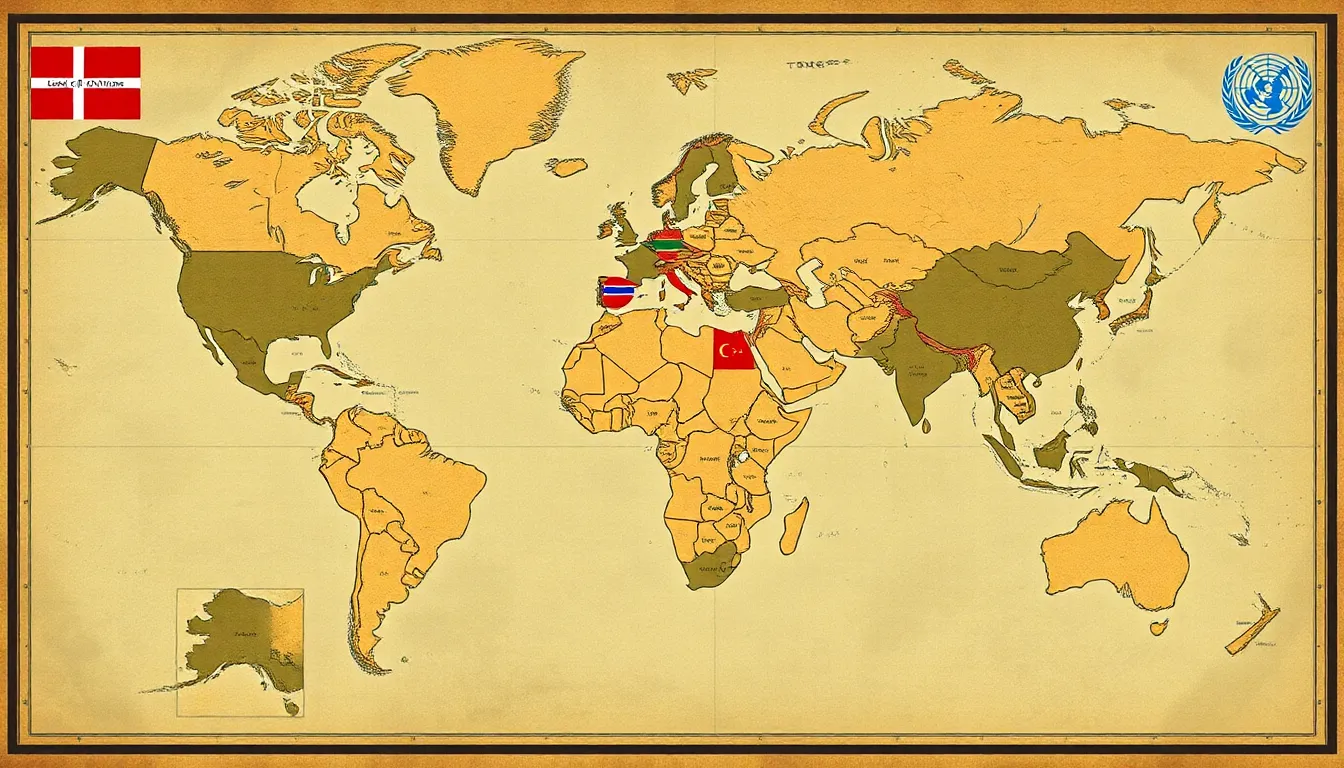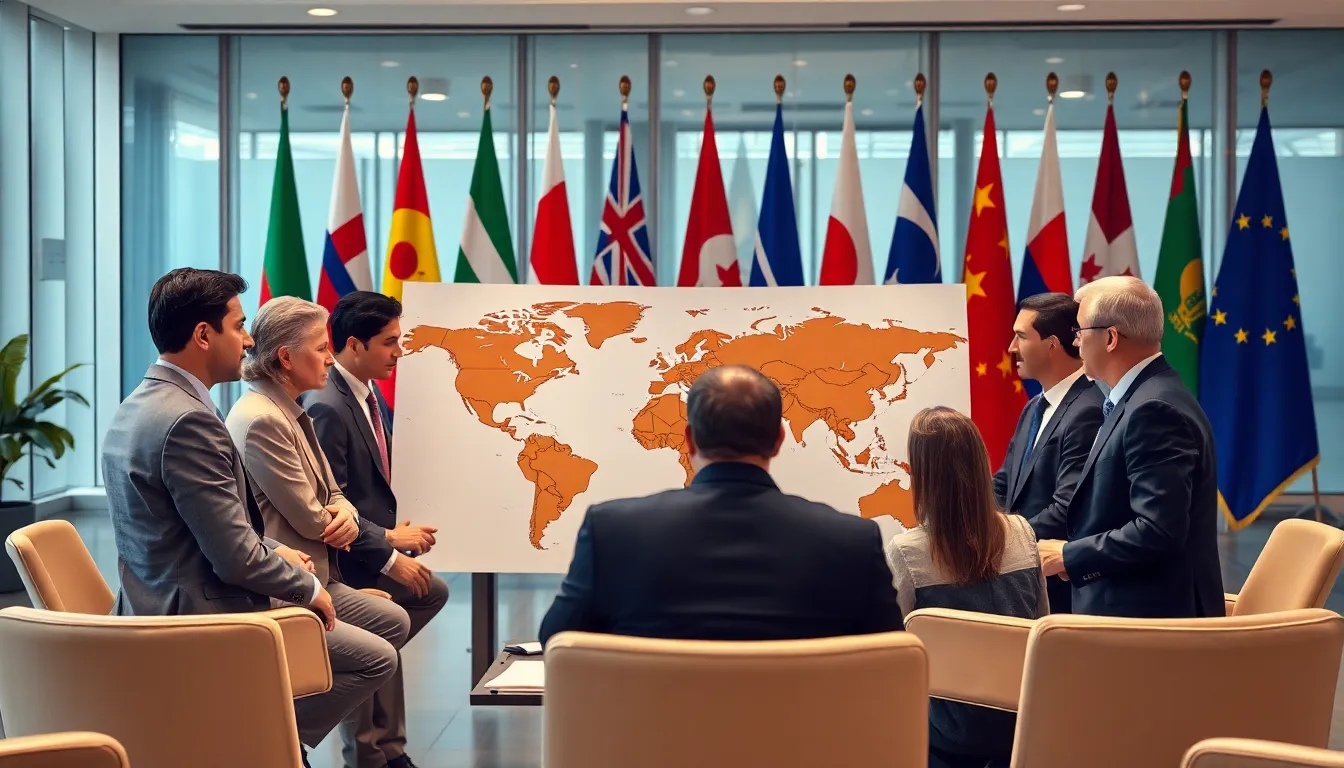Table of Contents
ToggleIn a world where threats can emerge faster than a cat meme goes viral, understanding international security is more crucial than ever. Countries are like a global game of chess, and every move counts. With geopolitical tensions, cyber warfare, and the occasional rogue state throwing a tantrum, it’s time to dive deep into the art and science of international security analysis.
This isn’t just about big military budgets and spy novels; it’s about deciphering the complex web of alliances and rivalries that shape our world. Whether it’s predicting the next diplomatic faux pas or assessing potential threats, international security analysis keeps us one step ahead. So grab your favorite beverage, settle in, and prepare to explore how this vital field influences everything from global peace to your morning news headlines.
Overview of International Security Analysis
International security analysis encompasses the assessment of various elements influencing global stability. This analysis includes understanding geopolitical tensions, military capabilities, and economic conditions. Analysts evaluate relationships between states, considering not only military budgets but also diplomatic efforts and alliances.
Critical to international security is the environment shaped by cyber warfare. Cyber threats have emerged as significant factors, altering traditional security dynamics. Nations must adapt to evolving technologies and potential attacks on infrastructure.
The role of international organizations cannot be understated. Groups such as the United Nations and NATO influence security policies and facilitate cooperation among states. Their efforts often aim at conflict prevention and crisis management, promoting global peace.
Furthermore, the impact of regional conflicts highlights the complexity of security analysis. Localized tensions can escalate into broader confrontations, significantly affecting neighboring countries. Analysts monitor these situations closely, recognizing the interconnectedness of regional and global security scenarios.
Societal factors contribute as well. Public perception and media coverage shape national security decisions. As information flows rapidly, the response to crises can be swayed by public opinion and political pressures.
With these elements in mind, understanding international security analysis proves crucial. It requires a multidisciplinary approach that accounts for historical, political, and technological contexts. As global dynamics continue to shift, staying informed on security trends remains essential for policymakers and citizens alike.
Historical Context


International security analysis is rooted in significant historical milestones and evolving theoretical frameworks. Recognizing these elements enriches understanding of the current security landscape.
Key Events Shaping International Security
World War I marked a pivotal moment in global security, exposing the need for collective defense arrangements. The establishment of the League of Nations aimed to prevent future conflicts but fell short. World War II led to the formation of the United Nations, enhancing international cooperation for peacekeeping. The Cold War introduced a bipolar world and the arms race, heightening tensions between superpowers. Events such as the Gulf War and the September 11 attacks further transformed security paradigms, highlighting the impact of terrorism and regional conflicts on global stability. Each event has reinforced the dynamics of international relations, illustrating the interconnectedness of nations.
Evolution of Security Theories
Realism emerged as a dominant theory in international relations, emphasizing state-centric security concerns. States prioritize their national interests and military capabilities for survival. Constructivism introduced a focus on ideas and identities, shaping how states perceive threats. Theories such as liberalism advocate for cooperation and democratic governance, influencing security arrangements and alliances. Since the end of the Cold War, human security frameworks have gained prominence, addressing issues like poverty and environmental threats. In academia, the evolution of these theories reflects the complexities of global security environments, adapting to changing geopolitical realities and societal needs.
Current Trends in International Security Analysis
International security analysis reflects the changing realities of global interactions and challenges. Key trends emerge as analysts navigate complex geopolitical landscapes.
Geopolitical Dynamics
Geopolitical alliances are shifting, impacting global strategies. Countries reassess their positions to adapt to rising powers and changing alliances. Regional conflicts often trigger broader implications, compelling nations to respond. Cooperation appears vital, as global interdependence grows. Analysts scrutinize these dynamics, identifying how political maneuvering shapes international relations. Rising tensions in areas such as Eastern Europe and the South China Sea highlight the need for strategic dialogue and conflict resolution. Furthermore, economic sanctions and trade relations play crucial roles in diplomatic efforts, emphasizing the interconnectedness of global stability.
Technological Advances
Technological advancements reshape security analysis significantly. Cyber capabilities have emerged as crucial elements in modern warfare, leading to increased vulnerabilities. Analysts evaluate cyber threats and their potential impacts on national security, including infrastructure risks. Innovations in artificial intelligence enhance defense strategies but also introduce ethical dilemmas. Drones and surveillance technologies play pivotal roles in intelligence gathering, affecting military tactics. Moreover, the proliferation of information technology alters the landscape of espionage and counterintelligence, emphasizing the necessity for robust defense mechanisms. As technology evolves, so does the approach to international security, urging nations to adapt and prepare for future challenges.
Major Challenges in International Security
International security faces numerous challenges today, significantly influenced by shifting geopolitical landscapes. Analysts recognize that these challenges complicate the maintenance of peace and stability globally.
Terrorism and Violent Extremism
Terrorism remains a prominent threat to international security. Global terrorist organizations exploit political instability and social unrest to recruit members. Violent extremism often breeds within marginalized communities, underscoring the need for comprehensive counter-terrorism strategies. Policies incorporating social programs and educational initiatives prove effective in addressing root causes of extremism. Nations like the United States and those in the European Union invest in intelligence-sharing to thwart terrorist activities. Collaboration among states demonstrates a united front against these decentralized threats, enhancing resilience and response capacities.
Cybersecurity Threats
Cybersecurity threats pose significant risks to national and international security. Cyber attacks compromise sensitive data, disrupt essential services, and undermine public trust. State-sponsored hacking groups demonstrate increased sophistication and target critical infrastructure, reflecting the evolving landscape of warfare. Effective cybersecurity strategies rely on public-private partnerships to enhance detection and response capabilities. Investment in cybersecurity starts with educating citizens about online safety and securing personal data. Governments emphasize the importance of international cooperation in establishing norms and frameworks to manage cyber conflicts. As technology continues to advance, vigilance in cybersecurity remains crucial to protecting national interests.
Case Studies in International Security Analysis
International security analysis encompasses various scenarios that illustrate the complexities and dynamics of global stability. The following sub-sections provide insights into specific case studies illustrating critical aspects of this field.
Regional Conflicts
Regional conflicts serve as a focal point in international security analysis. The Syrian civil war exemplifies how internal strife can escalate into a broader international crisis. Neighboring states like Turkey and Jordan have experienced significant refugee inflows, impacting their security and stability. The conflict spurred geopolitical rivalries, drawing in powers like Russia and the United States, highlighting the intricate relationships obscured by local disputes. Analysts observe that these conflicts often result in humanitarian crises, necessitating multi-faceted solutions that address both immediate violence and longer-term political resolutions.
Peacekeeping Efforts
Peacekeeping efforts play a crucial role in mitigating conflicts and fostering stability. The United Nations maintains numerous peacekeeping missions worldwide, notably in regions like Mali and South Sudan. These missions involve deployed forces tasked with protecting civilians and facilitating humanitarian aid. Successful peacekeeping requires collaboration among nations to provide resources and political support. Case studies reveal that early intervention often prevents escalation and lays the groundwork for sustainable peace, emphasizing the importance of diplomacy alongside military presence in conflict-affected areas.






